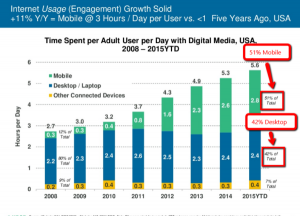Collaborative software and tools are widely available for companies to use with both on-site and distributed teams; however, connectivity and engagement are still concerns shared by U.S. workers. Slack’s 2018 Future of Work Study found that “91% of workers are looking to feel closer to their work colleagues, while nearly 85% of workers want to feel more connected with their remote colleagues.” Additionally, fear of reduced workplace engagement is often cited as one of the major hesitations business owners have toward adopting remote work policies.
The good news is these engagement worries can be mitigated; they should not discourage business owners from incorporating telecommuting plans into their business models or remote managers from strengthening existing telework policies through improved bonding strategies within their teams.
The Benefits of Bonding Within Remote Teams
Strong company culture and relationships among remote team members are good for employees and employers alike. In addition to boosting workplace morale and productivity, remote team members who feel invested in their work, as well as cared for by their managers and colleagues, are more likely to remain in their jobs.
Employees who have positive outlooks about their work environments can also become advocates for company mission statements and are more willing to put in their best performances every day. This increased sense of loyalty and trust in the workplace is also good for business. A Glassdoor study of the relationship between employee and customer happiness showed a statistically significant positive correlation between customer satisfaction and the level of employee well-being reported on Glassdoor for a given company. The impact is two-fold for companies with employees who frequently interact with customers.
Considerations for Implementing Bonding Strategies for Remote Teams
Business owners or remote managers crafting virtual bonding strategies for their remote teams should keep these factors in mind to help ensure the successful implementation and longevity of their remote engagement ideas:
Time Zones
When planning virtual events, be mindful of the time zones of geographically dispersed team members. While it is not likely that all team members will be able to attend every event, try to select event times that will accommodate the greatest number of participants or choose activities that do not require synchronous communication.
Socialization Comfort Levels
The autonomous nature of remote work makes it attractive to introverted professionals as well as workers who may specifically want to avoid traditional in-office functions and interactions found in on-site professional settings. Encourage remote team members to participate in non-essential events based on their own socialization comfort levels.
Some remote team members may gravitate toward bonding activities conducted via video conferencing while others may only feel comfortable sharing photographs or typing in a casual chat channel. The methods of remote engagement should matter far less than the rates of engagement and the positive outcomes.
4 Remote Team Bonding Strategies that Can Work for Any Distributed Workforce
Geographically dispersed co-workers may be separated by hundreds or thousands of miles, but this does not mean they have to feel less connected than their on-site counterparts. Strengthen bonds among remote staff with these four team-building suggestions for telecommuting colleagues:
1. Host Regular Icebreaker Events
Icebreakers are conversation starters. They are small activities designed to chip away at communication walls and mitigate the awkwardness of forming relationships with colleagues who may never meet. These six ideas offer icebreaker themes for both on-camera and off-camera bonding events:
On-Camera Conversation Starters for Remote Teams:
- Live Virtual Office: Remote team members join a virtual meeting room to work with their cameras and/or mics activated.
- Coffee Talk: Teams periodically gather online to share coffee and conversation about a topic set by the meeting host, which can rotate among volunteers.
- Show and Tell: Team members meet on-camera to showcase and describe a special item like a piece of memorabilia from a vacation, a keepsake from childhood, or a professional award.
Off-Camera Conversation Starters for Remote Teams:
- Netflix Movie Party: With a Chrome extension, Netflix users can join a watch party to sync viewing of a chosen movie or series. The Netflix Party extension would also allow remote teams to chat live while watching together.
- Mutual Volunteerism: Instruct remote team members to vote on a charitable cause important to them such as anti-littering, childhood hunger, or literacy. Then, select an agreed-upon day in which each remote team member volunteers for that cause in their local area or donates online to support an organization associated with the cause.
- Hometown Scavenger Hunt: Create a list of common geographic features, structures, or natural elements, like a lake, bridge, or historical place, common to most locations. Once the list is compiled, share it with remote team members to launch a local scavenger hunt to find an example of each item in their areas. Once the scavenger hunt has been completed, remote teams can meet in a communication app to share photos and captions describing their finds.
2. Create Casual Chat Space
One of the simplest and most effective ways to strengthen bonds among remote teams is to provide space for team members to appropriately and safely engage in virtual watercooler chat about everyday subjects. Slack and Basecamp are two popular team communication platforms that can easily facilitate casual chat space through Slack’s Channels or Basecamp’s Campfire feature. In these spaces, remote team members can connect on a personal level by saying a hello when they hop online, exchanging stories and photos from their personal lives, talking about the latest movies or series they have watched, and swapping beloved memes.
3. Make Timely Professional Acknowledgements
Icebreakers and casual chats cannot replace team, department, or company-wide recognition for a job well done. When team members finish major projects, break records, launch new products, or complete other noteworthy accomplishments for the business, celebrate them on the Company News section of the business website, via a company newsletter, or with an announcement on the company’s collaborative app of choice.
4. Encourage and Utilize Employee Feedback
When team members feel heard and believe their opinions matter to their colleagues and managers, they are more likely to feel loyal to their jobs and bonded to their team members. In an article for Forbes on “The Importance Of The Employee Feedback Loop,” Cord Himelstein—VP of marketing for HALO Recognition—says, “encouraging consistent, authentic communication establishes positive feedback loops, which are essential to the success of any reciprocal relationship.”
Business owners and remote team managers can engage employees and facilitate staff feedback through methods, which include forward-facing and anonymous feedback collecting ideas, like these:
- On-boarding and exit surveys
- Employee engagement surveys
- Staff reviews on a website like Glassdoor, Great Place to Work, or Careerbliss
- One-on-one breakouts with managers
- Virtual suggestion boxes or Q&As through an app like Weekly10
- Town hall-style video conferences with employees and managers
Regardless of the feedback gathering methods used, remote business owners and managers must also establish methods for responding to team member questions and comments in a timely and respectful manner; otherwise, remote team members could feel dismissed and undervalued, leading to workplace dissatisfaction and diminished bonds among remote team members—the antithesis of the intended goal.
Final Thoughts
Both business owners considering first-time telework directives and managers who want to ramp up engagement within their virtual businesses can improve workplace connectivity with these four bonding strategies for remote teams; however, the greatest successes will develop from employees becoming involved in the ideation of their team-building activities. Communicate to staff that positive company culture and inclusivity are priorities, then ask for suggestions about bonding activities. Determine what feels authentic and meaningful to the business and build from there.
Business & Finance Articles on Business 2 Community
(38)





